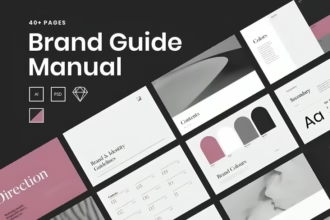How to Use Customer Feedback to Shape Your Brand
Creating a strong brand is essential for any business. Your brand tells people who you are, what you stand for, and why they should choose you. But how do you make sure your brand really speaks to your customers? One of the best ways is through customer feedback. Listening to what your customers say can help you improve, grow, and build a brand that people trust and love. Here’s how to use customer feedback to shape your brand.
Why Customer Feedback Matters
Customer feedback is any opinion, review, or comment your customers share about your products or services. It can come from surveys, social media, reviews, emails, or even conversations. Listening to this feedback is important because it shows you what your customers want, what they like, and what they don’t like.
When you use customer feedback wisely, you can:
- Identify what works well and what needs improvement
- Understand your customers better
- Adjust your products, services, or messaging
- Build trust and loyalty
- Stand out from your competitors
If you ignore feedback, you risk losing customers and damaging your reputation. But if you listen and act, you can create a brand that truly meets your customers’ needs.
How to Collect Customer Feedback
The first step is to gather feedback from your customers. Here are some ways to do that:
1. Use Surveys
Surveys are a simple way to ask your customers questions about their experience. Keep questions short and easy to answer. Focus on things like quality, price, service, and overall satisfaction.
2. Read Reviews
Check reviews on your website, social media, and review sites. Pay attention to what customers praise and what they criticize. Reviews give honest insights into how people really feel.
3. Engage on Social Media
Social media is a great place to talk to your followers. Ask questions, create polls, or start conversations. Respond to comments and messages quickly.
4. Ask Directly
When you interact with customers in person or through emails, ask for their opinion. Personal conversations can reveal a lot about customer needs and perceptions.
5. Monitor Competitors
Look at what customers say about your competitors. This can help you find gaps or opportunities to make your brand better.
How to Analyze Customer Feedback
Once you’ve collected feedback, the next step is to analyze it. Look for common themes or patterns. For example, do multiple customers complain about slow delivery? Or do many praise your friendly staff?
Create categories like:
- Product quality
- Customer service
- Price
- Delivery or shipping
- Branding and messaging
Identify which areas need the most attention and which are working well.
Dont miss: How to Collect and Use Customer Feedback the Right Way in 2025
Turning Feedback into Action
Now, the most important part is to turn feedback into changes. Here are some ways to do that:
1. Fix Problems Quickly
If many customers mention a specific issue, address it as soon as possible. Whether it’s fixing a product defect or improving a customer service process, quick action shows you care.
2. Keep What Works
Don’t change things that customers love. If your branding, product, or service is popular, keep doing it.
3. Adjust Your Messaging
If feedback shows your brand isn’t clear or is misunderstood, update your messaging. Make sure your branding reflects your values and appeals to your target audience.
4. Innovate Based on Feedback
Sometimes feedback can reveal new opportunities. For example, customers may ask for a new feature or a different product. Listen to these ideas and find ways to innovate and expand.
5. Communicate Changes
Let your customers know you’ve listened. Share updates, improvements, or new products based on their feedback. This builds trust and shows you value their opinions.
How Customer Feedback Shapes Your Brand
When you consistently listen and respond to customer feedback, it shapes your brand in several ways:
- Authenticity: Customers see that your brand is real and cares about their opinions.
- Relevance: Your brand stays aligned with what customers want.
- Differentiation: By fixing problems and innovating, your brand stands out from competitors.
- Loyalty: Customers who see their feedback making a difference are more likely to stay loyal.
- Trust: Open communication and transparency build trust in your brand.
Best Practices for Using Feedback Effectively
To make the most of customer feedback, keep these tips in mind:
- Ask regularly: Make feedback collection a routine part of your business.
- Be open: Accept both positive and negative comments.
- Act, don’t ignore: Show customers you listen by making improvements.
- Stay honest: Be transparent about changes and explain why you made them.
- Personalize responses: Personal engagement makes customers feel valued.
Conclusion
Using customer feedback isn’t just about fixing problems. It’s about making your brand better every day. Listening to what your customers say helps you improve your products, refine your message, and build a brand that truly connects. Remember, your customers are your best teachers. When you pay attention to their feedback and act on it, you can shape a brand that lasts.
Start collecting feedback today and turn your customer insights into a strong, trusted brand in your market.
Image source: Newbreedrevenue.com






